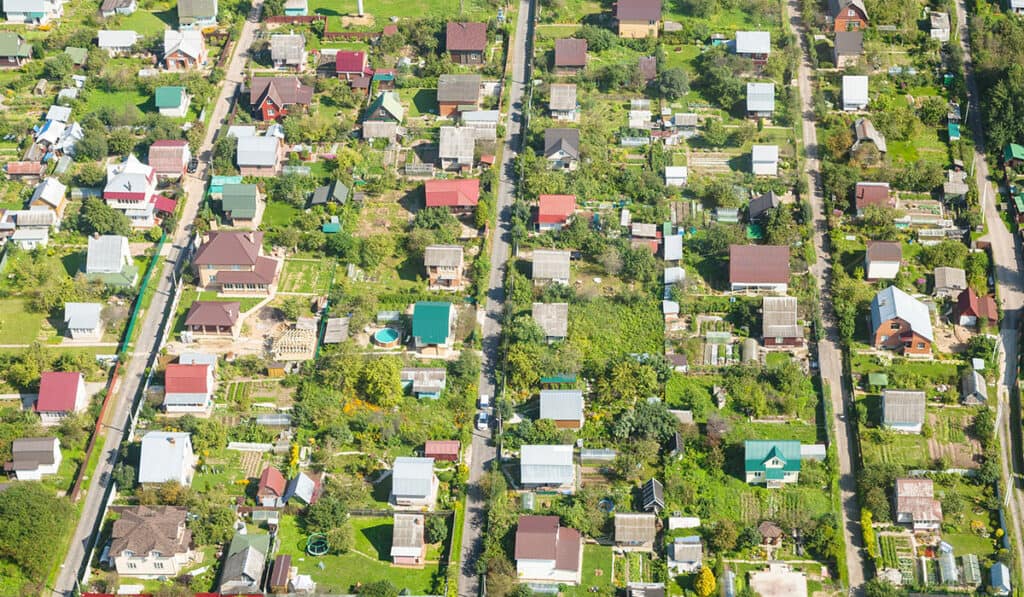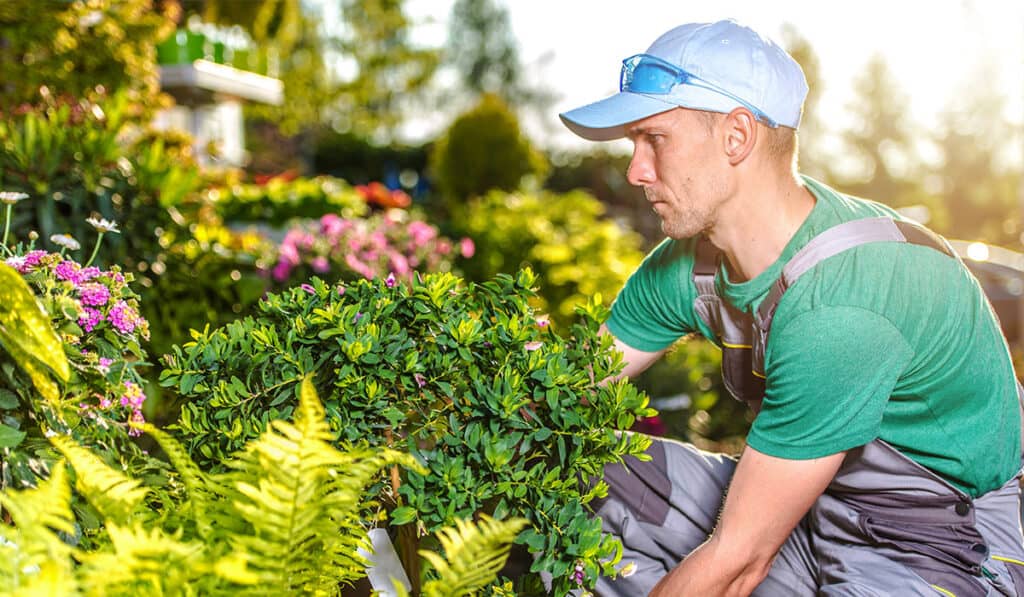Most homeowners put time and effort into taking care of their lawns or professional lawn services to do so, but while mowing, fertilizing, and watering are necessary for a healthy lawn, they may not be enough to make your lawn look as fabulous as you want it to. This is where lawn aeration comes in.
Lawn aeration is the process of perforating your lawn with small holes to reduce soil compaction, remove lawn thatch, and make it easier for air, water, and nutrients to travel down through the soil and to the root system. Thatch is the layer of dead turfgrass or organic debris that collects on your lawn’s surface over time and can reduce your lawn’s ability to absorb what it needs to stay healthy and green. Equipment used for aeration includes manual tools and machine-powered aerators. Core aerators remove small cores or plugs of soil, and spike aerators perforate the soil without removing it. There are also liquid aeration products that provide you with an aerated lawn without removing any plugs.
What Is The Purpose Of Lawn Aeration?
1. Aeration Breaks Up Compacted Soil.
Compacted topsoil can become so dense that your lawn won’t be able to absorb the water, air, and nutrients it needs, especially if your lawn has heavy clay soils. Aeration breaks up this compacted soil to allow more space for this absorption.
2. Aeration Removes Excess Thatch.
Excess thatch can build up over time and become so thick that it prevents water, air, and nutrients from effectively reaching the roots of the grass. Aeration breaks up this thatch, allowing the root system to get the air, water, and nutrients they need to grow stronger.
3. Aeration Allows Your Lawn Care Products To Work More Efficiently.
Lawn care products can travel down through your lawn more easily after aeration, which allows them to reach the root zone, resulting in stronger root growth and a healthier lawn.
What Is The Difference Between Core Aeration And Liquid Aeration?
Liquid aeration involves using a wetting agent as a delivery system for ingredients to move down through the surface and reduce soil compaction. These ingredients are a mixture of food for microbial life, such as kelp, and enzymes or bacteria. There are also decomposition products that are applied separately.
Core aeration has an immediate impact on your lawn. If your soil is severely compacted or your lawn has more than a half-inch thatch layer built up, using both methods may be more effective in bringing your lawn back to life. You can start with core aeration and then use liquid aeration for maximum results.
How Do You Aerate Your Lawn?
Hiring a professional lawn care company to provide aeration service for your yard is the best bet for many homeowners. These companies have the equipment and products to aerate your lawn properly, but if you decide to make it a DIY project, below are some steps you should follow.
1. Prepare Your Lawn.
Mow your lawn as you normally would, but don’t use fertilizers or other lawn care products before aerating. Mowing before aerating will help the aeration process be more effective.
2. Water Your Lawn.
Your lawn should be damp when you aerate it. Water it with about 1” of water a day or two before you aerate.
3. Mark Your Sprinkler Heads.
Mark any sprinkler heads to make them more visible so you won’t accidentally run over them and damage them.
4. Decide On A Method.
If you are using a traditional core aeration method, you can rent a mechanical core aerator at your local lawn and garden center. These are heavy and awkward, so you will need a truck and a friend or two to help you.
5. Aerate Your Lawn.
As you run the lawn aerator over the lawn, its tines will begin poking holes in the soil surface. Be sure to make a path that only passes over an area once to avoid overdoing it.
If you choose liquid aeration, you can purchase the appropriate products at your local lawn and garden center. These are products that you mix with water and apply evenly across the lawn with a hose-end sprayer or a backpack sprayer.
Things To Do After You Aerate.
- Leave the grass and soil plugs undisturbed. They will break down over time.
- If you see bare areas, now would be a good time to plant grass seed. This is called overseeding.
- Water your lawn thoroughly and add fertilizer.
- Continue with your normal maintenance routine.
- Aerate your lawn annually to prevent excessive lawn thatch and reduce soil compaction.
When Is The Best Time To Aerate Your Lawn?
There are several indications that it’s time to aerate your lawn.
During Its Growing Season
The best time to aerate your lawn is during periods of active growth, which depends on what type of grass you have. You should aerate lawns with cool-season grass during the summer or fall, and you should aerate lawns with warm-season grass from the early spring through the summer.
If Your Lawn Has Drainage Problems
If you notice standing water in your yard or water that is not properly draining, your soil could be compacted so much that the water isn’t moving along properly. If the water runs off of your lawn quickly when you water it instead of being absorbed, you could have a drainage issue. Aerating your lawn will enable water to penetrate the surface easier and eliminate or reduce these problems.
If Your Lawn Looks Sparse.
If your lawn doesn’t look as healthy as it should or if the grass has become sparse, it may be time to aerate your lawn. This is especially helpful if you have areas that show excessive wear from heavy foot traffic.
Maintenance.
Don’t wait until you have problems to aerate your lawn. Making aeration part of your regular maintenance routine as it can reduce excess thatch build-up and loosen compacted soil. Regular aeration will encourage your lawn to grow healthy and green.
Lawn aeration allows air, water, and nutrients to get down deep into the soil where the roots are located. It’s an important step in consistently keeping your lawn healthy, green, and beautiful, and it should be a regular part of your annual lawn care maintenance.


